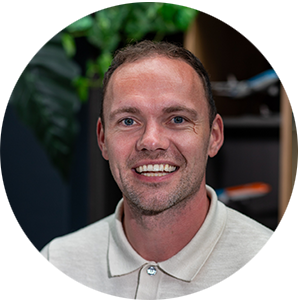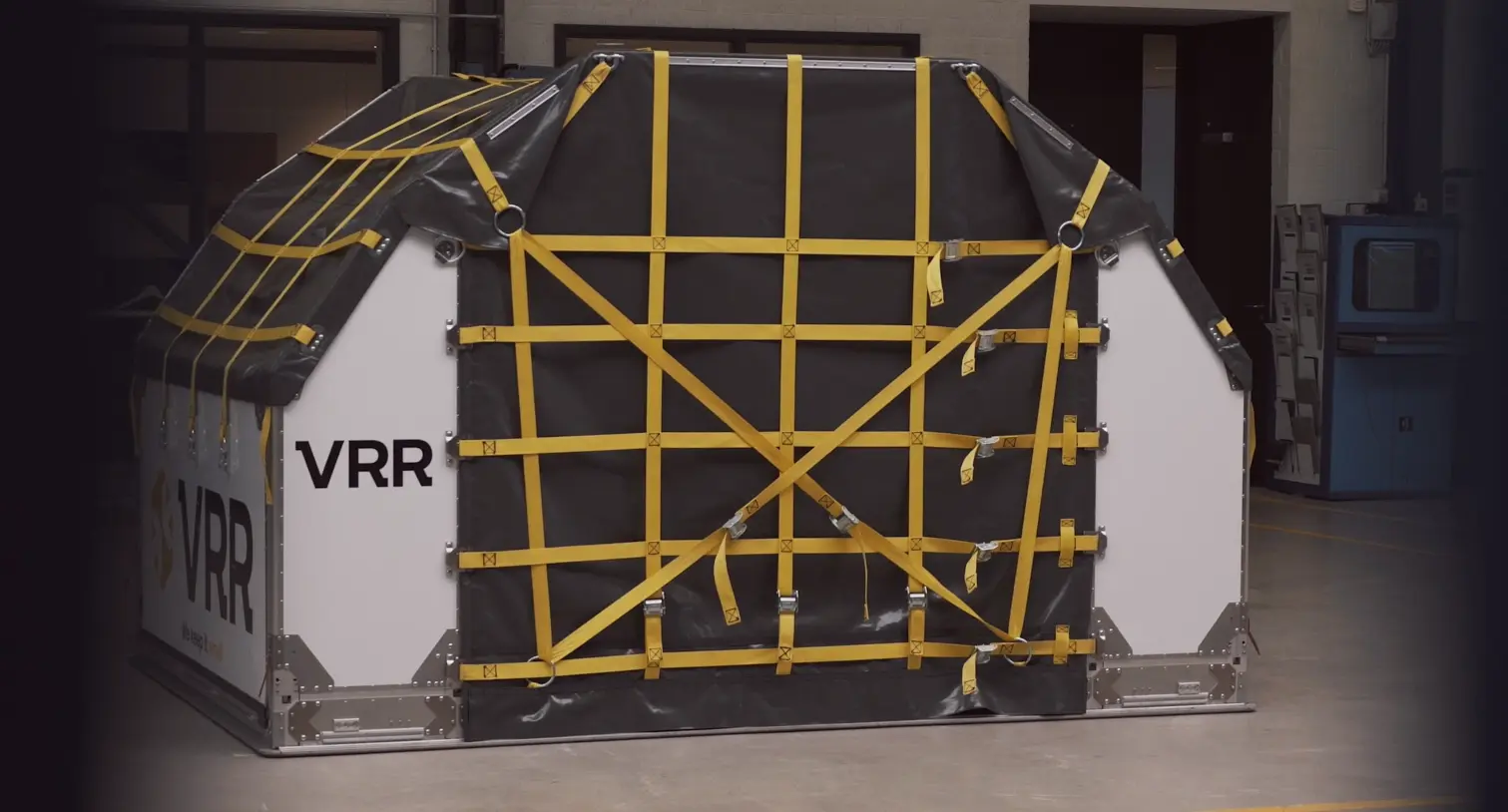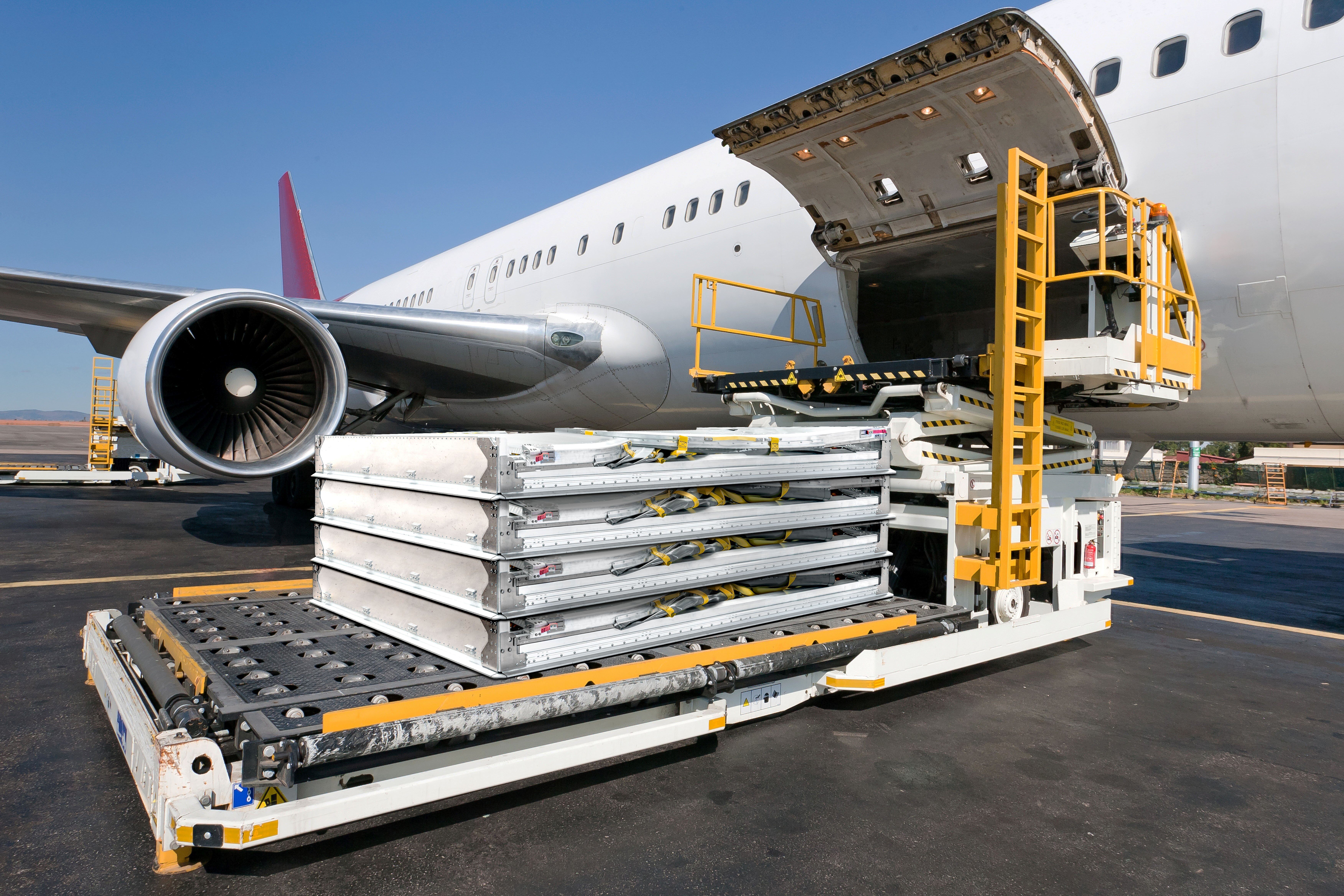How do you create a ULD that can be folded and stacked but is also robust, lightweight, weatherproof and simple to operate? To find out, we sat down recently with Bop, Lead Engineer at VRR. He revealed the technical stages that VRR’s engineers took to transform a unique and complex design concept into the AAX Collapsible and the AAY Collapsible.
Turns out it’s not that easy…
Taking up the challenge: Engineering a pioneer design
The AAX Collapsible and AAY Collapsible were conceived to solve a genuine problem facing all ULD fleet managers: what to do with empty containers. Until now, they’ve had little choice: store them where they may be needed later or return them unloaded. Both options are expensive.
But VRR wanted to give managers a third option: containers that can be used to transport cargo in the usual way on the outward journey and then folded and stacked afterwards for either storage or repositioning at a significantly reduced price.
“Right from the beginning, it was a challenging combination of design factors,” admits Bop. “How do you make an AAX or AAY do something that a standard container doesn’t, yet perform the same job and give customers additional advantages?”
Challenging it may have been, but that didn’t deter Bop or his engineering colleagues:

Preliminary design stage: Creating the boundaries of an abstract idea
The engineering department got involved in the multi-disciplinary project right from the start when the idea of a foldable and stackable container was just that—a broad idea. First up, conducting market research, establishing customer needs, determining general functionality, and making a business case. Then it was time to turn this brainchild into a visual representation. Step forward the design, product, quality and compliance engineers.
“I compare this stage to having a clump of clay and turning it into a rough shape,” says Bop.
The first task was to understand the product’s requirements, not only the technical capabilities of VRR but also the container’s materials, the prerequisites of the civil aviation regulatory authority (which are stringent), and the specifications of customers and end-users.
“What we were doing is turning an abstract idea with absolutely no boundaries into a holistic concept with boundaries,” explains Bop. “Unless we established the product’s limitations, we couldn’t know which direction to take.”
It was time to draw concept sketches, produce basic 3D models and complete an initial design specification. Unsurprisingly, the technical aspects of the container’s design dominated this stage of the process, including engineering calculations and manufacturing limitations.
It wasn’t a quick process. Bop estimates that it took about a year to get from basic idea to first tangible prototype, with many iterations on the way.


Critical design stage: Making the imaginary real
Once everyone understood the scope of the project and a first-pass analysis of all critical components had been finalised, the project could move to the next level.
“This is when you put on your realism glasses,” laughs Bop.
The engineers’ focus was on making something that could actually be produced. Could they source their materials and would they need testing for fire-properties? How would they make the various components, and would they need to develop their own aluminium extrusion profiles?
“All these items have a long lead time, so they needed to be done as early as possible,” explains Bop. “We also had to carry out structural analyses to check that the conceptual design would meet the strict strength requirements set by the civil aviation authorities.”
They explored ways to make the containers stronger to increase robustness and then make them weaker to reduce weight—conflicting conditions that tested their engineering skills but never shook their belief in the project.
“At this stage, you’re testing all your concepts for real with 3D models and full or partial prototypes,” says Bop. “But for the collapsible, we also did a proof of concept because we had to demonstrate that these innovative techniques would actually work. A 3D model is extremely useful, but it can’t bring the design to life.”

Communicating and collaborating: Reliance on a multi-disciplinary approach
Proving that every aspect of a collapsible container would work in the real world and producing the design refinements that followed was time-consuming. Bop estimates that it took at least another six months to tackle all the design and compliance challenges that arose during this critical design stage. But each round of analysis and testing produced ever-more accurate specifications.
The constant refinement kept everyone involved in the project, from structural engineers and assembly teams to sales engineers, buyers and safety engineers.
“Working on a completely new concept can be particularly challenging because you have nothing to compare it to,” says Bop. “So, as the work ramped up, we held weekly meetings to keep everyone informed and all design aspects aligned. Communication is really important to ensure there’s no mismatch of realities.”
Eventually, Bop’s team proved that the concept of a collapsible ULD was a realistic option and would meet – at least in theory - all structural and regulatory requirements.
‘You want to be absolutely sure that your new design will meet every single business, market and customer requirement before ordering half a tonne of aluminium and spending €10,000 on an extrusion mould!”

Final design stage: Leaving no engineering stone unturned
With all departments happy, the engineers set about producing the design package that would allow the collapsible AAX and AAY to be certified and manufactured. This was no small task. It included detailed design reviews, technical drawings of all the physical components, structural reports, material substantiations, operating and maintenance manuals, and even end-user instruction stickers and videos.
“This is also when we make our assembly drawings to show how we get from a box of parts to a complete container. A bit like an Ikea instruction booklet, only much more technical and accurate,” says Bop, smiling.
It’s a crucial stage because no detail can be overlooked. In the aerospace industry, the design of any new aviation product must be formally approved to demonstrate compliance with design and airworthiness standards. In this case, that’s Part 21 Subpart J of EASA’s regulatory framework. This outlines all the requirements and procedures for the design, production, and approval of parts, appliances, and materials used in aviation.
“Before submitting the design package to EASA, we had to pre-empt all the questions the regulatory body would have for us,” says Bop. “Catching every issue before the approval stage was essential. Otherwise, we wouldn’t get design approval from EASA.”
Proving the structural integrity of the collapsible ULD to the regulatory authority wasn’t straightforward, though. The analysis software that VRR usually uses to make strength calculations works well for standard, rigid aluminium containers but not for non-rigid structures.
“The collapsible is strong and heavy-duty, but its flexibility means it behaves more like a piece of fabric rather than a piece of aluminium,” explains Bop. “So we had to develop a new method to calculate the container’s strength and prove to EASA that it could contain cargo during flight conditions.”

Certification achieved, but the engineering work continues
After spending countless more hours on the final design stage and on compliance, not to mention the work on developing the new calculation, VRR was finally ready to submit the design package. Fortunately, the company is extremely experienced in getting its products certified by EASA, even highly original ones.
After several months of answering the regulatory authority’s questions and submitting additional evidence, everyone involved in the project got their reward: an approved design for the collapsible AAX and AAY. However, the engineering work didn’t end there. Things always emerge once a product is launched and production ramps up.
“The assembly team gives a lot of valuable feedback in the early stages of any new product,” says Bop. “What makes sense from a design point of view doesn’t always make sense in a factory setting. Small changes to assembly order can make a big difference to the build process. That was certainly the case with our collapsible ULDs.”
Customers are also a useful source of feedback. Their experience using ULDs on a day-to-day basis can be incredibly instructive. Although the engineers made the collapsible containers as simple as possible to use, they knew that questions about operating and maintaining such unique containers were inevitable. Over the weeks and months, those questions led to updated drawings and small iterations. The result is a better production flow and improved products.

The joy of working for a pioneering engineering company
Looking back at the entire project, Bop admits that the collapsible AAX and AAY weren’t the easiest containers in the world to engineer. But the teamwork, ingenuity and persistence displayed by all those involved in the project have resulted in two remarkable air cargo containers.
“VRR is the only company that makes the collapsible AAX and AAY, and all the engineers here were excited to be part of such an innovative project,” concludes Bop. “We’re grateful VRR dares to do something different.”

.png)



.webp)